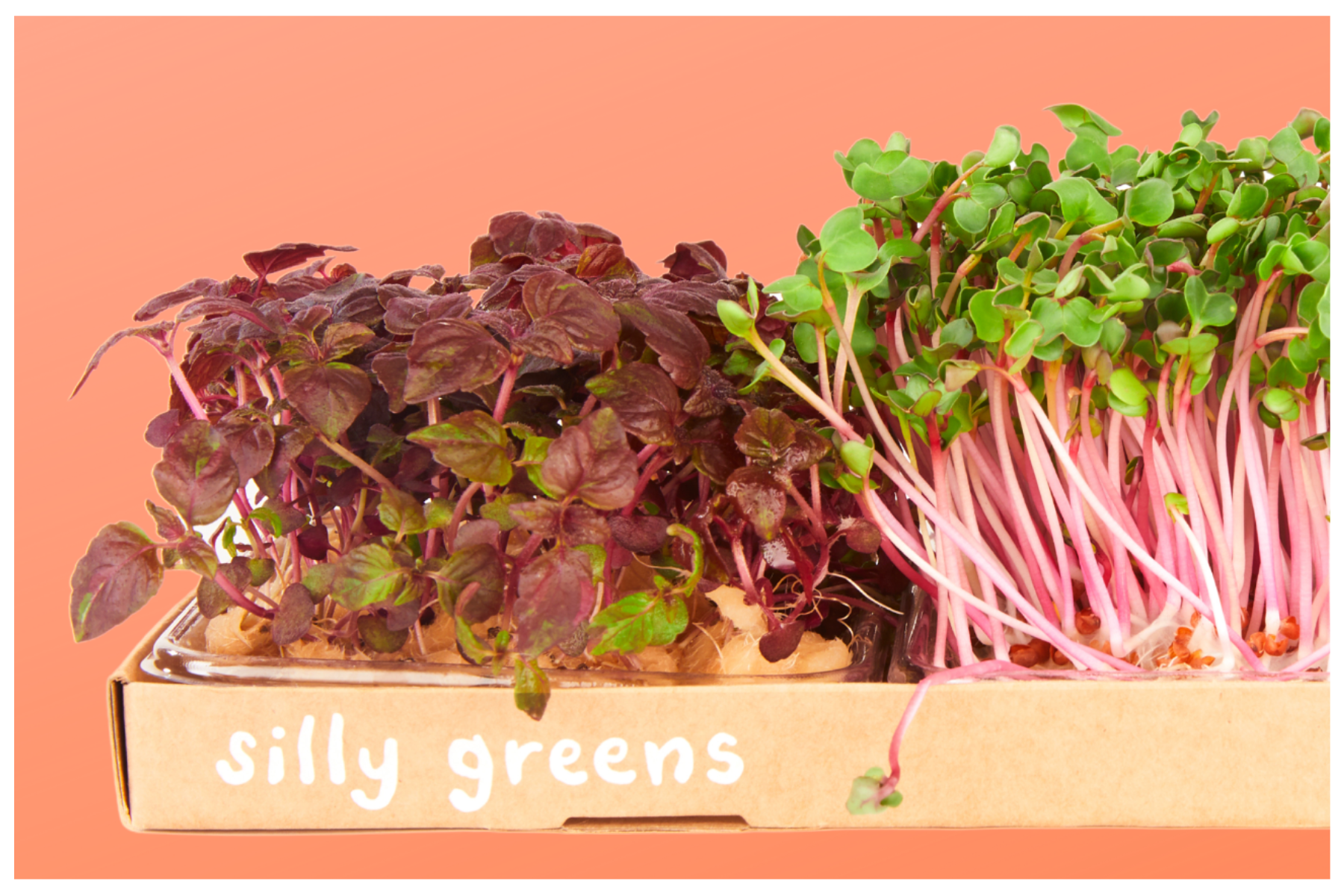Sprouting post to get a start in the garden

Home grown greens that cost less than the shops without needing more than a single water. Silly Greens makes it easy to grow greens in the kitchen and it does half the work, sowing the seeds so they can spring from the mat.
It’s not been an overnight success for Silly Greens, a company which started out eight years ago. For a bootstrapped business providing hand-sown live seed mats perhaps the writing was on the wall. It has gone through much trial and error since it first set up base in a disused school canteen in Bermondsey, London. Set up by Ed without any horticultural experience and just a feeling it could work. “I choose microgreens in a way because they were supposed to be easiest crops you can grow indoors, a need little space. I might still agree with those things but posting seeds so they sprout and grow out the package wasn’t so easy”. It took some persistence to find a way to make it work. Growing food is all all about trial and error and not exact results, even in an indoor environment but the aim was to remove the first step of growing the greens ‘the sowing’ to provide an alternative to shop bought ready to eat micro leaves.
Price, freshness and availability have always been a barrier for Micro Greens and Silly Greens cost less and remain living right until they go on the plate.
In order to set it apart from the rest the aim was for them to be ‘living’ and fit through the letterbox. For it to catch on this was the crucial part as that’s what gives it wider appeal to make this relatively unknown thing ‘the microgreen’ viable in more ways than one. The crops come quick too which is an incentive to those on the fence about growing their own.
I had a rooftop which I snuck a few plants up onto, but the fire escape space was a luxury in London. I wanted something that could have wide adoption even if microgreens aren’t that well known, so that really meant indoors even if that does miss the point. Something that was ready to go was also key to make the whole thing more conceivable. It’s not proper gardening but it’s immediate and needs no equipment. If that’s all someone can do or enough to feed into something else then it’s not hard to go on from there, it only needs some seeds and we all know where the garden centre is.
What became apparent was how self grown microgreens were unmatched to the alternative shop bought, in a different way to how home grown veg and shop bought veg compare. So much of the quality comes down to their freshness, which is where they differ widely. A few days makes a big difference, they want serving straight on the plate. The choice and availability also doesn’t exist in the supermarkets.
Getting Microgreens into the supermarkets has always had an issue because they are never that good past day 2 and many of the nutrients that people eat them for fade away by this point. The whole process to get them on the shelves made them costly, as it had implications on where they were grown (often cities) and how they packed and transported and refridgerated. Living greens at home seemed to eradicate these issues and live packs through the post could work out better value.
Suddenly it wasn’t just an initiative to start people growing them but a better alternative than the farms or supermarkets, even on their terms of cost and convenience. Proper home grown veg isn’t really competing with supermarkets in terms of cost and convenience but home grown micro greens packs not only won in terms of quality but were effortless, easier to get and cost effective.
Now with four different ways to grow the micro leaves, the seeds all sprout in the post but they can be grown in a pot saucer, a bamboo pot, straight out of the package or even from one’s own pot or plate. Refills cost £4.95 per month and grow kits start at £12 each.






